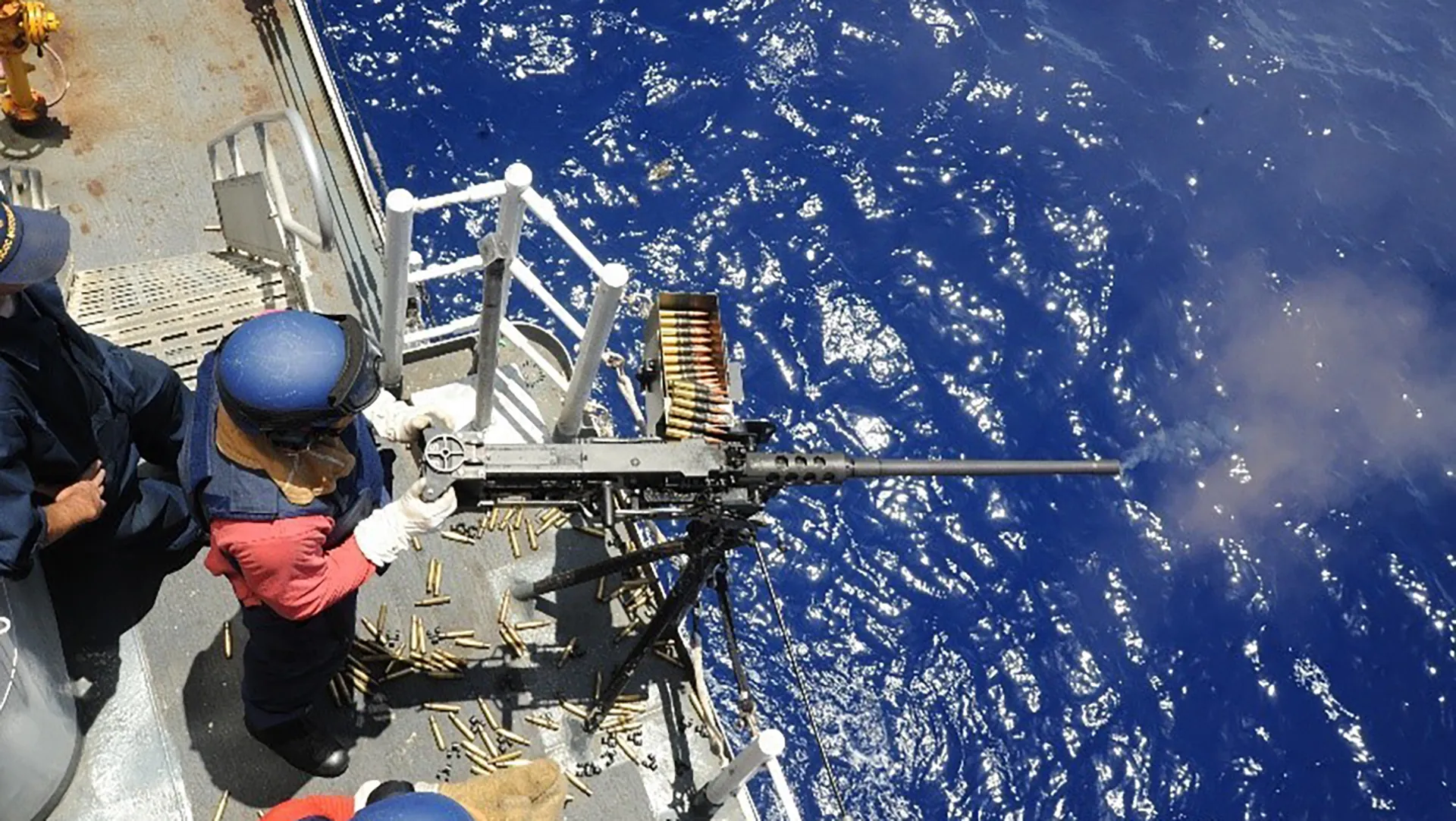

A Coast Guard cutter fired roughly 30 warning shots from its .50 caliber machine gun on Monday after Iranian fast boats harassed U.S. vessels in the Strait of Hormuz, defense officials said.
This latest incident marks the second time in as many weeks that U.S. ships have fired warning shots in response to aggressive maneuvers by Islamic Revolutionary Guard Corps Navy boats.
Monday’s incident happened as four Navy ships and two Coast Guard patrol boats were escorting the Ohio-class guided-missile submarine USS Georgia through the Strait of Hormuz, according to 5th Fleet. The Georgia was surfaced at the time.
A total of 13 armed Iranian speedboats surrounded the American vessels, which were in international waters at the time, said 5th Fleet spokeswoman Cmdr. Rebecca Rebarich. All of the Iranian boats were moving too fast and too close to the U.S. ships.
Then, two Iranian boats broke away from the rest of their group and zoomed toward the Coast Guard patrol boats USCGC Wrangell and USCGC Maui at speeds above 32 knots, a 5th Fleet news release says.
The two Iranian speedboats failed to respond to several types of warnings from the Coast Guard vessels and came within 300 yards of the Maui and Wrangell, the news release says.
The Maui fired a burst of warning shots at the Iranians, but the boats did not relent, coming within 150 yards of the patrol boat, the news release says. But after the Maui fired a second burst, the Iranian boats finally broke off.
“The two IRGCN [Islamic Revolutionary Guard Corps Navy] vessels maneuvered in an unsafe and unprofessional manner and failed to exercise due regard for the safety of U.S. forces as required under international law,” the news release says. “Their actions when coupled with the actions of the larger group of FIAC [fast in-shore attack craft] increased the risk of miscalculation and collision and were not in accordance with the internationally recognized COLREGS’ ‘rules of the road’ or internationally recognized maritime customs.”
On April 26, a much smaller group of three Iranian speedboats harassed two U.S. vessels in the Persian Gulf, prompting the coastal patrol boat USS Firebolt to fire warning shots.
Pentagon spokesman John Kirby described the number of Iranian boats involved in this latest incident “significant.”
“It’s certainly more than we’ve seen in recent past,” Kirby told reporters during a Pentagon news briefing.
“That it occurred in a strait, an international chokepoint waterway, that too is significant,” he added.
It is also worth noting that the Navy took the highly unusual step back in December of posting a picture of the Georgia transiting the Strait of Hormuz, marking the first time in eight years that an Ohio-class guided-missile submarine had sailed in the Persian Gulf.
When asked if the Iranians were trying to pick a fight with the Navy and Coast Guard, Kirby said the Islamic Revolutionary Guard Corps Navy has harassed American vessels for a long time.
Kirby declined to say under what circumstances U.S. ships could sink Iranian fast boats that act aggressively.
“That gets to specific rules of engagement,” Kirby said. “I think you know we don’t talk about that. Our commanding officers and the crews of our ships, they have the right of self-defense and they know how to use that right.”
Featured image: Coast Guard Cutter Northland crew members fire .50 caliber machine gun in the West Atlantic Ocean, July 23, 2018 during their Caribbean patrol. (Coast Guard Photo)
